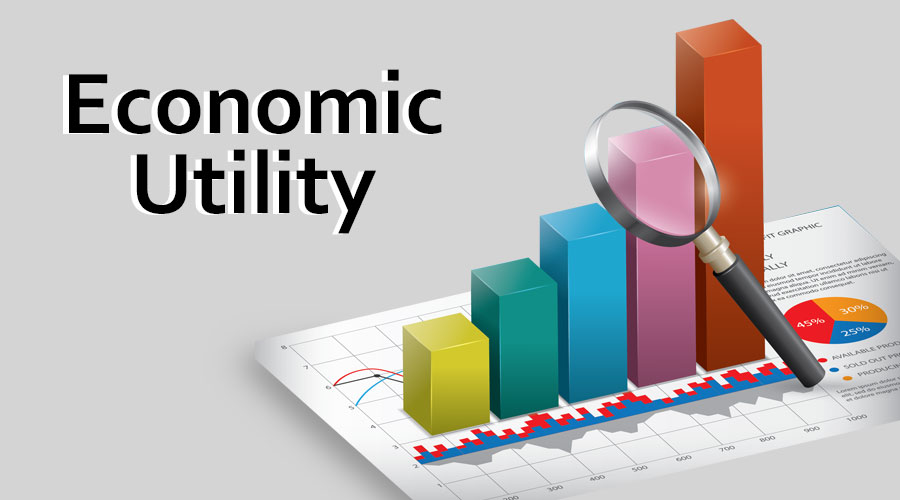Utility refers to the usefulness or cost of a good, service, or resource. It is a measure of how nicely some thing satisfies a unique favor or need. Utility can be subjective, as it relies upon on person preferences and tastes.
In economics, the thinking of utility is used to analyze customer conduct and choice making. It is assumed that buyers goal to maximize their utility, or satisfaction, with the aid of selecting the items and offerings that grant the most price to them. The notion of utility is additionally used in evaluating the overall performance of public items and services, such as infrastructure and healthcare.
Overall, utility is a way of expressing the gain or fee that some thing gives to folks or society.
There are specific methods of categorizing utility, however right here are three important types:
Cardinal utility: Cardinal utility refers to the potential to measure utility in absolute terms, such as in devices of currency. This kind of utility is used in financial fashions to analyze client conduct and the allocation of resources.
Ordinal utility: Ordinal utility refers to the potential to rank preferences or delight levels, however now not to measure them in absolute terms. This kind of utility is used to describe how customers make selections based totally on their relative preferences for distinct items and services.
Subjective utility: Subjective utility refers to the personal, subjective understanding of utility or pleasure that a character has for a good, service, or resource. This kind of utility is primarily based on man or woman preferences, tastes, and beliefs and can range from man or woman to person.
These extraordinary sorts of utility can be used to analyze distinctive components of customer conduct and choice making, and to enhance financial fashions that provide an explanation for how customers allocate their assets and make choices.
Marginal utility refers to the exchange in utility (or satisfaction) that a character experiences from eating one extra unit of a true or service. In different words, it is the greater pride that a individual gets from ingesting one extra unit of a exact or service, past what they already have.
For example, think about a man or woman who enjoys ingesting ice cream. The first scoop of ice cream may grant a lot of satisfaction, or excessive marginal utility. However, with every extra scoop, the marginal utility of ice cream decreases due to the fact the person's starvation is being at ease and they are getting much less and much less delight from every scoop. Eventually, the marginal utility of ice cream will become zero or negative, that means that the individual is no longer getting any more delight from eating extra ice cream.
Another instance is the consumption of a commodity like water. In a state of affairs the place a individual is thirsty, the first glass of water may grant excessive marginal utility. However, as the individual continues to drink water and their thirst is quenched, the marginal utility of water decreases.
In financial theory, the regulation of diminishing marginal utility states that, as a character consumes extra and greater devices of a top or service, the marginal utility of that right or carrier will decrease. This is due to the fact the extra devices of the correct or provider are much less treasured to the character as they have already relaxed their most urgent wants or wants.
Overall, marginal utility is a beneficial thinking in economics for grasp client conduct and selection making, as it captures the more pleasure or cost that a individual receives from ingesting one extra unit of a exact or service.
-Shoaib Akhter
What is the equilibrium situation in utility?
In economics, the idea of equilibrium refers to a nation the place there is no in addition tendency for exchange in a unique market or system. In the context of utility, equilibrium refers to a country the place an individual's utility is maximized and there is no in addition enchancment viable by way of eating greater or distinct items and services.
The equilibrium situation in utility can be described by way of the following:
Consumer Equilibrium: A client is in equilibrium when they have allotted their finances in such a way that they are getting the perfect degree of pride possible. This is done when the marginal utility per unit of foreign money spent on every proper or provider is equal.
Market Equilibrium: A market is in equilibrium when the volume furnished of a proper or provider equals the volume demanded, and there is no in addition tendency for rate or volume to change. In this situation, the market fee represents the price that customers area on the right or service.
In each cases, the equilibrium situation displays a stability or steadiness between provide and demand, the place each shoppers and producers are getting the fine effect viable given the reachable sources and market conditions.
Overall, the notion of equilibrium in utility is an necessary device for perception how customers allocate their sources and how markets function, as it gives a framework for examining the stability between furnish and demand and the degree of utility or pleasure finished by using consumers.
Tags
economics

